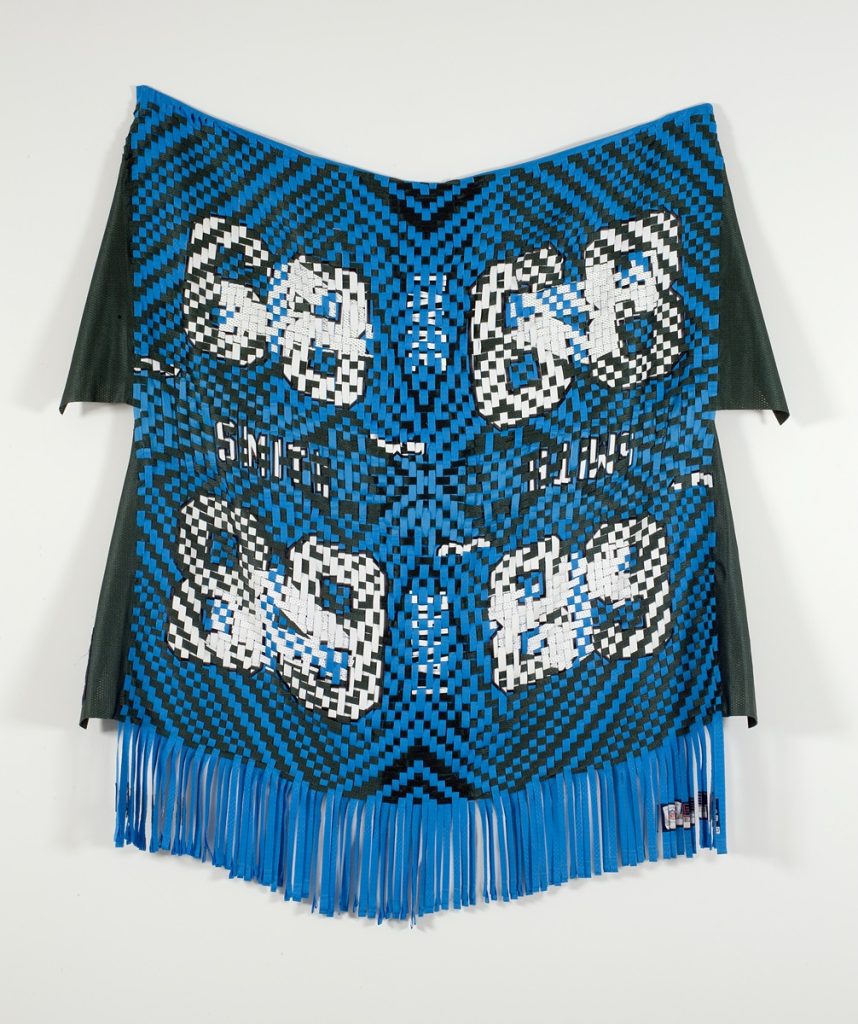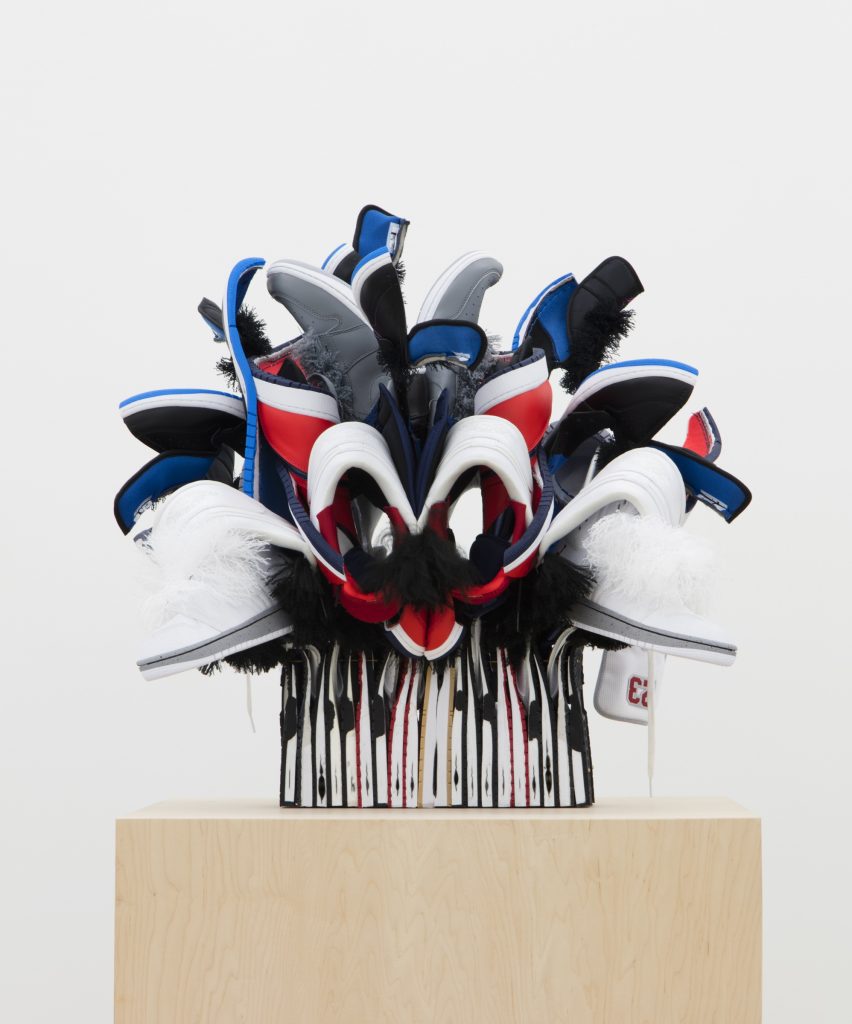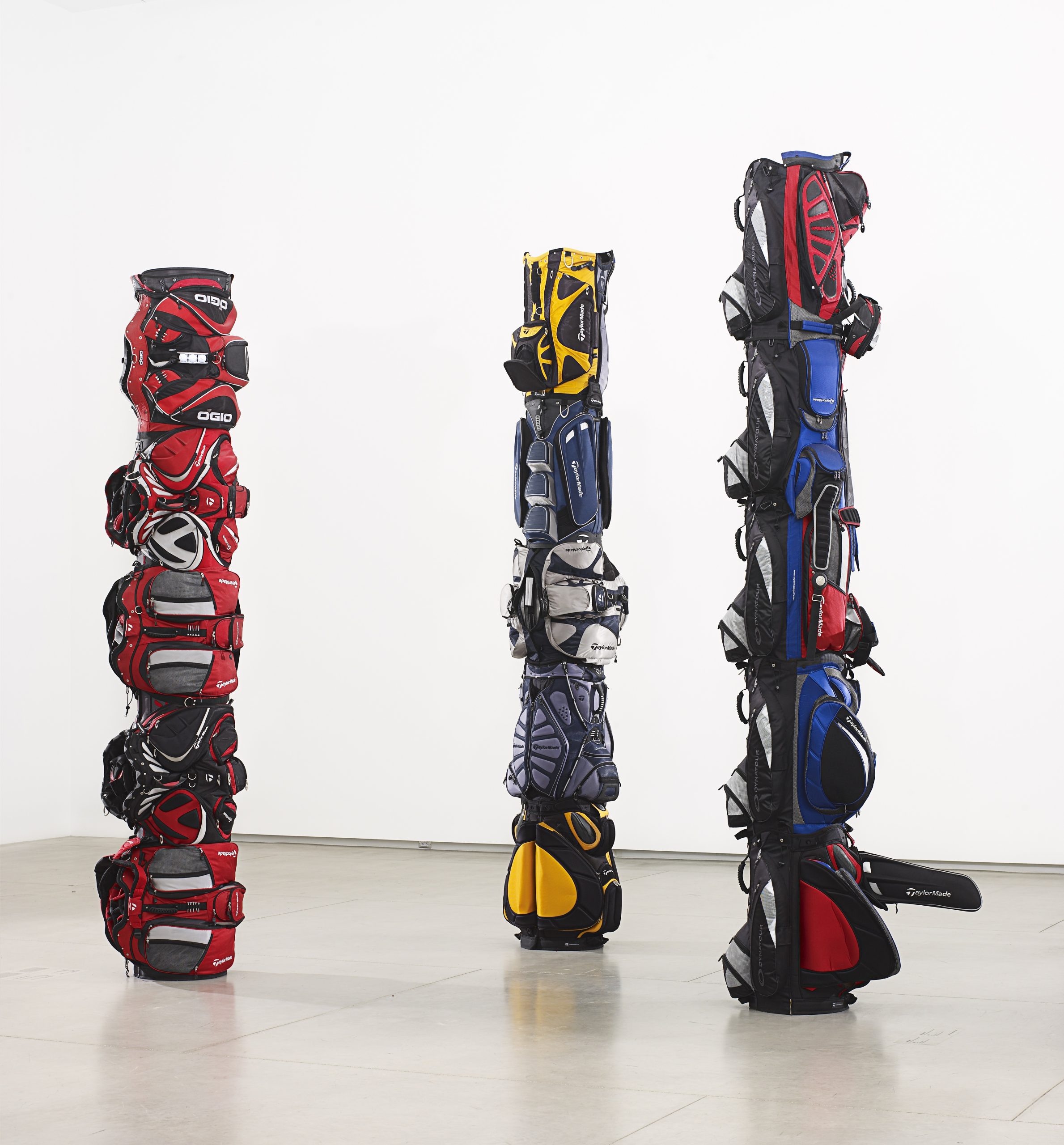It is good to be a Canadian right now.
At least, that’s how many feel after Bianca Andreescu’s recent historic win against Serena Williams in the U.S. Open, and with a federal election coming up next month, not to mention this summer’s defining Raptors win.
Mississauga’s 19-year-old Andreescu’s win makes Canadian women feel doubly proud, and the October 21 election presents parties with platform promises such as something more active than demonstrative sympathy for Indigenous communities. Canadians right now are facing precipitous change and a moment to truly interrogate their national identity and consider how to wield this knowledge and success to shape a better country.
This past July and August, the Art Gallery of Ontario hosted a solo exhibition by Brian Jungen that, with its recent close, seemed to predict this charged air of social and political potential. Through art, and all that is attendant to displaying art — bearing of witness and education, poignant juxtaposition, and laying bare — Jungen’s work, moulded primarily of North American sports paraphernalia, has the viewer examine their Canadian identity, its complex and twining roots, and asks them to countenance the power they wield to make change.




Jungen, who works out of North Okanagan, B.C., was the first living Indigenous artist to exhibit at the Smithsonian Museum of the American Indian in Washington in 2009. His works have been shown at prominent galleries such as the Tate in London, U.K., the Vancouver Art Gallery, and the Hirschhorn Museum and Sculpture Garden in Washington. This year marks the first time that the AGO hosted a solo presentation by an Indigenous Canadian artist.
The exhibition, which opened on June 20 at the AGO in the Sam and Ayala Zacks Pavillion, put forth some of Jungen’s new work. The “Gym Room” was the focal point of the exhibition. On the reserve, the gymnasium is the place where people come together. With floors marked up like a basketball court and benches lining the walls, the room hosted Jungen’s free-standing sculptures and masks. Jungen transforms Nike Air Jordan sneakers into pieces that resemble Northwest Coast masks and Plains Indian headdresses. “My work is largely about transforming things, but these sneakers also speak about where I come from. Nike Air Jordans are popular among Indigenous youth,” Jungen says.
The sneakers sculptures turn Western mainstream culture’s depiction of Indigenous motifs on its head. Using a sneaker that continues to captivate consumers’ imagination, that children not only in Jungen’s youth but even today still want — Jungen uses this commodity, something that has become fetishisized, to create nuanced and accurate depictions of actual Indigenous objects.
CetologyIn 1998, Jungen made a trip to New York City. On this single visit, he went to the Nike store and to the American Museum of Natural History, says Debbie Johnsen, the Curatorial Administrative Assistant at the AGO. At the Nike store, Jungen was struck by the luxury that surrounded him — the steep prices of the footwear, and the reverence given to the shoes. Displayed as relics in a museum, the shoes were lit up, placed on pedestals and marveled at. Going over to the Museum of Natural History, Jungen saw Indigenous artworks being displayed as artefacts. The polarity of this experience — the devaluation of art and its being displaced and projected onto an expensive good — is something that is calcified in the sneakers sculptures. Every single part of the sneaker is used in each sculpture, no part is wasted.
This theme is also explored in “The Prince,” an image of the “Cigarstore Indian,” a ubiquitous figure that is a caricature. Jungen’s Prince is made entirely of baseball gloves. “[Jungen] wanted to rethink the way people looked at Indigenous art,” Johnsen says. And then there are the blankets woven of football and basketball jerseys. These blankets are shaped like Indigenous regalia, but they also harken to the manner in which sports work like a ceremony that brings people together into a gymnasium or a stadium.
The piece that closed the exhibition was “Cetology,” made of plastic chairs and resembling a whale’s skeleton. According to the plaque that accompanied the piece, it is inspired by the last orca in captivity at the Vancouver Aquarium, along with the manner of displaying whale skeletons in natural history museums. Made of plastic that has lost its use value, the material takes on a new purpose as the skeleton of a swiftly-disappearing animal: “an endangered animal is made from an indestructible material,” Jungen says.
Race, Canadian history, the environment, and class are all explored by Jungen in his breathtaking and colourful pieces. Jungen layers many meanings onto his pieces, links various ideas, and shows the complexity of the Canadian identity. Jungen is well-versed in history, and he uses this knowledge and his own experience to create pieces that provoke something in the viewer. It’s a sense of familiarity, one recognizes oneself in the piece, but also sees that there is something troublesome twitching right beneath the surface, like an itch. Jungen provokes meaningful thought in the viewer, has them think about our collective cultural identity, both the good and the ugly. And armed with the results of this introspection, hopefully he hopes we will act intelligently in the future, soon.








